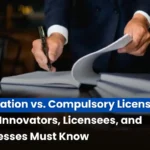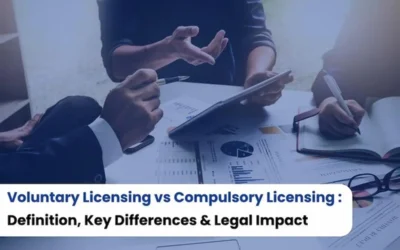
Patent monetization comes with a whole set of terms and jargon, and anyone getting into this space needs to understand them clearly. Two of the most commonly confused terms are Revocation of patent licensing and compulsory licensing. Even though they sound similar, they mean completely different things and play very different roles in the patent world. In this article, we’ll break down what each term actually means, why they matter, and how they differ so you can navigate the patent monetization process with confidence. Keep reading to understand what revocation of patent licensing and compulsory patent licensing mean.
What Do Patent Licensing, Revocation of Licensing, and Compulsory Licensing Mean?
Before we dive into the meaning of Revocation of patent licensing and compulsory licensing, it’s important to understand what patent licensing actually is—because that makes it much easier to see how these concepts differ. Patent licensing is basically a business arrangement where the patent owner gives someone else permission to use their patented technology. In return, the patent owner earns money (usually through royalties), and the buyer gets legal rights to use the invention for their business. It’s a win-win setup that forms a huge part of the patent monetization world. There are many types of patent licensing, such as:
- Exclusive licensing,
- Non-exclusive licensing,
- Sole licensing,
- Royalty-based licensing,
- Cross-licensing, and more.
Now, let’s understand the first term: revocation of patent licensing. This isn’t a type of license—it’s what happens when the patent owner cancels an existing licensing agreement. Revocation usually happens when the licensee breaks the rules, like not paying royalties, misusing the invention, or doing things they weren’t allowed to do. It can also occur if the patent itself gets cancelled or if the agreement includes a clause that allows the patent owner to terminate under certain conditions. Once a license is revoked, the licensee must immediately stop making or selling anything based on that patent and may also have to pay penalties. In simple words, revocation means the patent owner is taking back their permission.
Now let’s look at compulsory patent licensing, which is completely different. This isn’t a business deal at all—this is when the government steps in and forces a patent holder to license their invention to someone else, even if the patent owner disagrees. This only happens in special situations like public health emergencies, national crises, extreme shortages, or when a life-saving product is priced too high or not available. Under a compulsory license, the patent owner still gets paid a royalty, but they lose their exclusive control. The goal is to protect public interest, especially when private patent rights could create barriers to essential access, such as medicines, vaccines, or critical technologies.
Read Also: LG and Amazon Finalize Wi-Fi Patent Licensing Agreement
What Is the Difference Between Revocation of Patent Licensing and Compulsory Licensing?
Now, let’s break down the key differences between revocation of patent licensing and compulsory patent licensing, because they may sound similar, but they work very differently.
- Revocation is basically a private decision made by the patent owner. It happens when the licensee breaks the rules—maybe they didn’t pay royalties, misused the invention, or simply went beyond what they were allowed to do.
- Compulsory licensing is completely different because it doesn’t involve any contract issues at all. Here, the government steps in and forces the patent owner to let someone else use the invention, usually during emergencies or when essential products—like medicines or critical tech—are too costly or unavailable. Even if the patent owner disagrees, the license still goes through because public access becomes the top priority. So, while revocation protects the patent owner’s interests, compulsory licensing protects the public’s interests.
Conclusion
Understanding revocation of patent licensing and compulsory licensing helps clear up two concepts that are often mixed up. One protects the patent owner’s rights, while the other ensures public access when it matters most. Both play important roles in the patent system and help maintain a balance between business interests and public welfare. Knowing the difference makes it easier to navigate the world of patent monetization and understand how innovation, law and public needs connect.
Read Also: Voluntary Licensing vs Compulsory Licensing: Definition, Key Differences & Legal Impact









